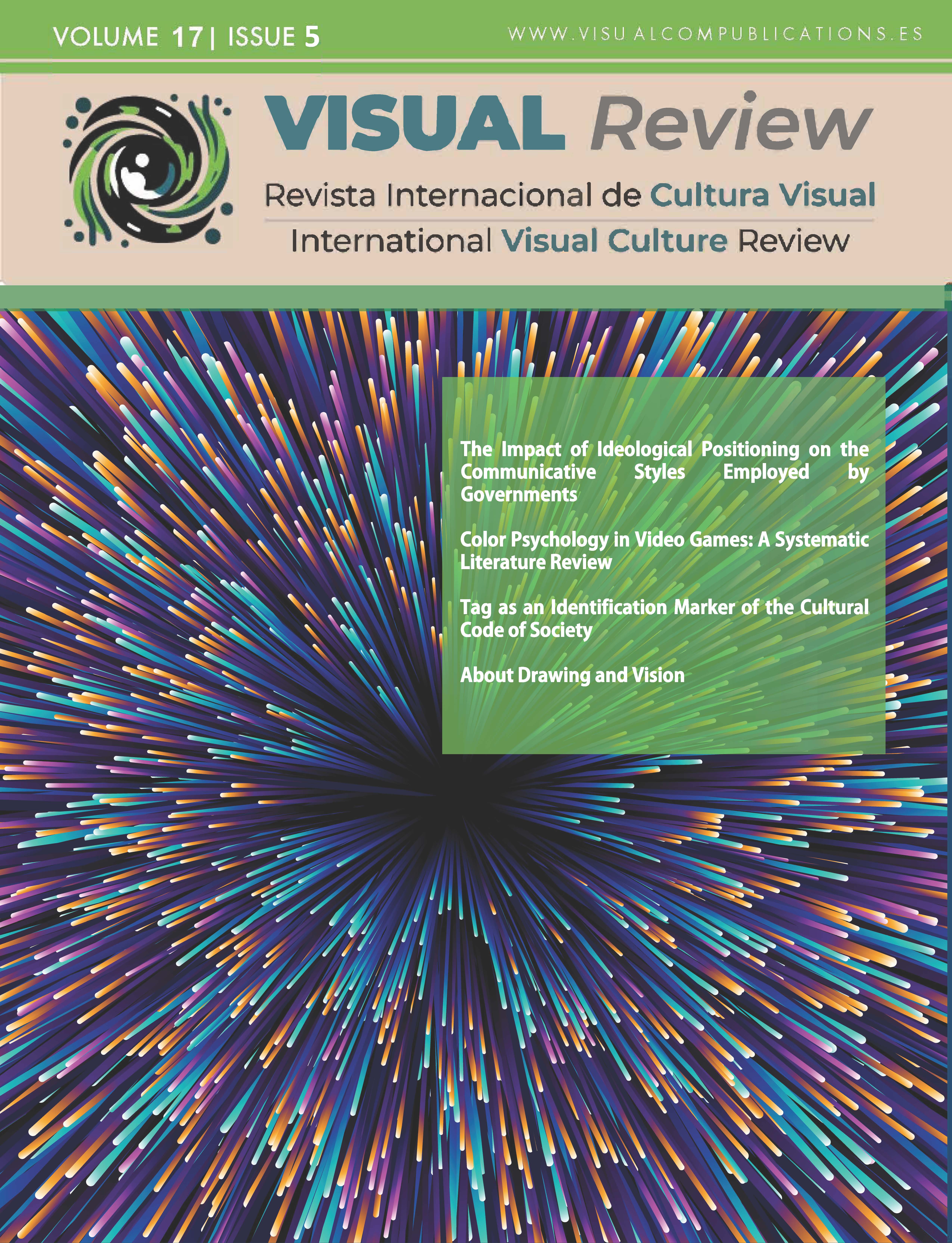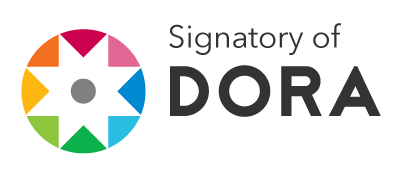The Impact of Ideological Positioning on the Communicative Styles Employed by Governments
DOI:
https://doi.org/10.62161/revvisual.v17.5708Keywords:
political communication, personalization, Instagram, politainment, leadership, political ideology, digital communicationAbstract
This paper analyses the relationship between ideological self-positioning and leadership styles communicated on Instagram by twelve female politicians. The research uses content analysis of 1,290 posts made during 2023. The study examines the correlation between the politicians' self-perceived ideological positioning and 1) the type of information communicated (soft information/politainment vs. hard information/political); 2) the projected leadership style (conciliatory/soft vs. firm/hard); 3) the level of personalization in their communications. The results reveal that women government leaders who identify with the right-wing ideological spectrum tend to: employ more politainment strategies; project a more conciliatory leadership style; and use more personalized communication.
Downloads
Global Statistics ℹ️
|
464
Views
|
263
Downloads
|
|
727
Total
|
|
References
Arceneaux, K. (2024). Value creation through organizational storytelling: Strategic narratives in political campaigns. Public Relations Review, 50(2). https://doi.org/10.1016/j.pubrev.2024.102433 DOI: https://doi.org/10.1016/j.pubrev.2024.102433
Bennett, W. L., & Segerberg, A. (2013). The logic of connective action: Digital media and the personalization of contentious politics. Cambridge University Press. DOI: https://doi.org/10.1017/CBO9781139198752
Berrocal-Gonzalo, S., Quevedo-Redondo, R., & García-Beaudoux, V. (2022). Política pop online: Nuevas estrategias y liderazgos para nuevos públicos. IndexComunicación, 12(1), 13-19. https://doi.org/10.33732/ixc/12/01Politi DOI: https://doi.org/10.33732/ixc/12/01Politi
Berrocal, S. (Coord.) (2017). Politainment: la política espectáculo en los medios de comunicación. Tirant lo Blanch.
Brader, T. (2006). Campaigning for hearts and minds. The University of Chicago Press. DOI: https://doi.org/10.7208/chicago/9780226788302.001.0001
Campos-Domínguez, E. (2017). Twitter y la comunicación política. Profesional de la Información, 26(5), 785–794. https://doi.org/10.3145/epi.2017.sep.01 DOI: https://doi.org/10.3145/epi.2017.sep.01
Caro-Castaño, L., Marín-Dueñas, P. P., & García-Osorio, J. (2024). La narrativa del político-influencer y su fandom: El caso de Isabel Díaz Ayuso y los ayusers en Instagram. Revista Mediterránea de Comunicación, 15(1), 285-303. https://doi.org/10.14198/MEDCOM.25339 DOI: https://doi.org/10.14198/MEDCOM.25339
Casero-Ripollés, A. (2020). Political communication in the digital ecosystem: A challenge for democracy. El Profesional de la Información, 29(1), e290101. https://doi.org/10.3145/epi.2020.ene.01 DOI: https://doi.org/10.3145/epi.2020.ene.01
Chadwick, A. (2020). The hybrid media system: Politics and power. Oxford University Press.
Cohen, D. (1960). A coefficient of agreement for nominal scales. Educational and Psychological Measurement, 20(1), 37–46. https://doi.org/10.1177/001316446002000104 DOI: https://doi.org/10.1177/001316446002000104
Colomina, M. (1996). La política como espectáculo: ¿Una guerra entre poderes? Diálogos, 3, 24-27.
Combs, J. E. (1980). Dimensions of political drama. Goodyear. Comparing Established and Third Wave Democracies. Sage Open, 8(2). https://doi.org/10.1177/2158244018784986 DOI: https://doi.org/10.1177/2158244018784986
Conover, M. D., Gonçalves, B., Flammini, A., & Menczer, F. (2012). Partisan asymmetries in online political activity. arXiv preprint arXiv:1205.1010. https://arxiv.org/abs/1205.1010 DOI: https://doi.org/10.1140/epjds6
Cundy, D. T. (1986). Political commercials and candidate image: The effect can be substantial. En L. Kaid, D. Nimmo, & K. Sanders (Eds.), New perspectives on political advertising (pp. 135-149). Southern Illinois University Press.
D’Adamo, O. y García Beaudoux, V. (2012) Storytelling. El relato político. El consultor.
D’Adamo, O. y García Beaudoux, V. (2017) Doce Ingredientes para la construcción de un relato de gobierno. En: E. Richard y A González (Eds.), Manual de Comunicación de Gobierno, Cap. 11, 195-210, Bogotá: Universidad Externado de Colombia DOI: https://doi.org/10.2307/j.ctv18msn96.14
D’Adamo, O., García Beaudoux, V.I. y Agustín Bruni, L. 2021. Las emociones en la comunicación política: breve recorrido teórico. Opera. 28 (ene. 2021), 195–215. https://doi.org/10.18601/16578651.n28.09 DOI: https://doi.org/10.18601/16578651.n28.09
Dader, J. L. (2012). Periodismo político y política del periodismo: Imaginando un futuro digno y sostenible. En S. Berrocal & E. Campos (Eds.), La investigación en periodismo político en el entorno de los nuevos medios (pp. 35-58). Sociedad Española de Periodística.
de-Lima-Santos, M. F., Gonçalves, I., Quiles, M. G., Mesquita, L., Ceron, W., & Couto Lorena, M. C. (2023). Visual political communication in a polarized society: A longitudinal study of Brazilian presidential elections on Instagram. arXiv preprint arXiv:2310.00349. https://arxiv.org/abs/2310.00349 DOI: https://doi.org/10.1140/epjds/s13688-024-00502-0
Edelman, M. (1988). Constructing the political spectacle. The University of Chicago Press.
Enli, G., & Rosenberg, L. T. (2018). Trust in the age of social media: Populist politicians seem more authentic. Social Media + Society, 4(1). https://doi.org/10.1177/2056305118764430 DOI: https://doi.org/10.1177/2056305118764430
Enli, G., & Skogerbø, E. (2013). Personalized campaigns in party-centered politics: Twitter and Facebook as arenas for political communication. Information, Communication & Society, 16(5), 757–774. https://doi.org/10.1080/1369118X.2013.782330 DOI: https://doi.org/10.1080/1369118X.2013.782330
Fischer, S., & Lelkes, Y. (2023). Emotion, affective polarization, and online communication. En R. L. Nabi & J. G. Myrick (Eds.), Emotions in the digital world: Exploring affective experience and expression in online interactions.Oxford Academic. https://doi.org/10.1093/oso/9780197520536.003.0021 DOI: https://doi.org/10.1093/oso/9780197520536.003.0021
García Beaudoux, V. y Slimovich, A. (2021). Información dura-pública y blanda-privada publicada por candidatos y candidatas en Instagram durante la campaña electoral en Argentina 2019, Perspectivas de la Comunicación, Vol. 14. Nº1 (2021), enero junio, 11-48. https://doi.org/10.4067/S0718-48672021000100011 DOI: https://doi.org/10.4067/S0718-48672021000100011
Garramone, G. (1983). Issue versus image orientation and effects of political advertising. Communication Research, 10(1), 59-76. https://doi.org/10.1177/00936508301000100 DOI: https://doi.org/10.1177/009365083010001003
Gómez-García, S., Gil-Torres, A., Carrillo-Vera, J. A., & Navarro-Sierra, N. (2019). Constructing Donald Trump: Mobile apps in the political discourse about the president of the United States. Comunicar, 59, 49-59. https://doi.org/10.3916/C59-2019-05 DOI: https://doi.org/10.3916/C59-2019-05
Gómez, R., & Méndez, L. (2023). La construcción de la imagen política en Instagram: Un análisis de la estrategia de humanización en líderes latinoamericanos. Revista Latinoamericana de Comunicación Social, 82, 45-67.
Graber, D. (1987). Magical words and plain campaigns. En L. P. Delvin (Ed.), Political persuasion in presidential campaigns (pp. 23-38). Transaction Books.
Gutiérrez Rubí, A. (2019). Gestionar las emociones políticas. Gedisa.
Haime, H. (1988). Votando imágenes: Las nuevas formas de comunicación política. Editorial del Centro.
Hellweg, S. (2004). Campaigns and candidate images in American presidential elections. En K. L. Hacker (Ed.), Presidential candidate images (pp. 21-48). Rowman & Littlefield. DOI: https://doi.org/10.5771/9781461641209-21
Huszár, F., Ktena, S. I., O'Brien, C., Belli, L., Schlaikjer, A., & Hardt, M. (2021). Algorithmic amplification of politics on Twitter. arXiv preprint arXiv:2110.11010. https://arxiv.org/abs/2110.11010 DOI: https://doi.org/10.1073/pnas.2025334119
Interian, R., & Rodrigues, F. A. (2023). Group polarization, influence, and domination in online interaction networks: A case study of the 2022 Brazilian elections. arXiv preprint arXiv:2303.16859. https://arxiv.org/abs/2303.16859 DOI: https://doi.org/10.1088/2632-072X/acf6a4
Izurieta Cánova, R. (2001). La comunicación política en la era del entretenimiento. En R. Izurieta, R. Perina, y C. Arterton (Eds.), Estrategias de comunicación para gobiernos. Editorial Ecuador.
Keeter, S. (1987). The illusion of intimacy: Television and the role of candidate personal qualities in voter choice. Public Opinion Quarterly, 51(3), 344-358. https://doi.org/10.1086/269040 DOI: https://doi.org/10.1086/269040
Krippendorff, K. (2013). Content analysis: An introduction to its methodology. Sage.
Lakoff, G. (2004). Don't think of an elephant! Know your values and frame the debate. Chelsea Green Publishing.
Lang, A. (1991). Emotion, formal features, and memory for televised political advertisements. En F. Biocca (Ed.), Television and political advertising: Vol. 1. Psychological processes (pp. xx-xx). Lawrence Erlbaum Associates.
Lemish, D. & Tidhar, C.E. Still Marginal: Women in Israel's 1996 Television Election Campaign. Sex Roles, 41, 389–412 (1999). https://doi.org/10.1023/A:1018874816901 DOI: https://doi.org/10.1023/A:1018874816901
López Rabadán, P., y Domenéch Fabregat, H. (2018). Instagram and the spectacularization of political crises. The 5W of the digital image in the independence process in Catalonia. Profesional de La Información, 27(5), 1013–1029. https://doi.org/10.3145/epi.2018.sep.06 DOI: https://doi.org/10.3145/epi.2018.sep.06
Luke, T. (1987). Televisual democracy and the politics of charisma. Telos, 70, 59–79. https://doi.org/10.3817/1286070059 DOI: https://doi.org/10.3817/1286070059
Marcinkowski, F., & Greger, V. (2002). La personalización de la comunicación política en la televisión: ¿Un resultado de la americanización? En F. Priess (Ed.), Relación entre política y medios: Propuestas alemanas en una perspectiva comparada (pp. 123-139). Temas.
Mazzoleni, G., & Bracciale, R. (2019). La politica pop online: I meme e le sfide della comunicazione politica. Il Mulino.
Metz, M., Kruikemeier, S., y Lecheler, S. (2019). Personalization of politics on Facebook: Examining the content and effects of professional, emotional and private self-personalization. Information, Communication and Society,1481-1498. https://doi.org/10.1080/1369118X.2019.1581244 DOI: https://doi.org/10.1080/1369118X.2019.1581244
Moreno-Cabanillas, A., Castillero-Ostio, E., & Serna-Ortega, Á. (2024). El impacto de las redes sociales en la campaña política: elecciones generales de 2023 en España. REDMARKA. Revista de marketing aplicado, 28(1), 56–76. https://doi.org/10.17979/redma.2024.28.1.10114 DOI: https://doi.org/10.17979/redma.2024.28.1.10114
Pineda, A., Barragán-Romero, A. I., & Bellido-Pérez, E. (2020). Representación de los principales líderes políticos y uso propagandístico de Instagram en España. Cuadernos.info, (47), 107-123. https://doi.org/10.7764/cdi.47.1744 DOI: https://doi.org/10.7764/cdi.47.1744
Quevedo-Redondo, R., y Portalés-Oliva, M. (2017). Imagen y comunicación polí¬tica en Instagram. Celebrificación de los candidatos a la presidencia del Gobierno. Profesional De La información, 26(5), 916–927. https://doi.org/10.3145/epi.2017.sep.13 DOI: https://doi.org/10.3145/epi.2017.sep.13
Schwartzenberg, R. (1978). El show político. Ensayo sobre y contra el star-system en política. Dopesa
Singh, A., Das, S., & Jha, S. (2023). Women leadership and emotions: Knowledge structure and future research opportunities. European Management Journal, 41(6), 864-882. https://doi.org/10.1016/j.emj.2023.05.004 DOI: https://doi.org/10.1016/j.emj.2023.05.004
Steimberg, O. (1998). Semiótica de los medios masivos. Atuel.
Stier, S., Bleier, A., Lietz, H., & Strohmaier, M. (2018). Election campaigning on social media: Politicians, audiences, and the mediation of political communication on Facebook and Twitter. Political Communication, 35(1), 50-74. https://doi.org/10.1080/10584609.2017.1334728 DOI: https://doi.org/10.1080/10584609.2017.1334728
Sullivan, J.; Aldrich, J.; Borgida, E. y Rahn, W. (1990). Candidate appraisal and human nature: Man and Superman in the 1984 election, Political Psychology, 11, 459-484. DOI: https://doi.org/10.2307/3791660
Tucker, J. A., Guess, A., Barbera, P., Vaccari, C., Siegel, A., Sanovich, S., Stukal, D., & Nyhan, B. (2018). Social media, political polarization, and political disinformation: A review of the scientific literature. SSRN. http://dx.doi.org/10.2139/ssrn.3144139 DOI: https://doi.org/10.2139/ssrn.3144139
Una Vida Online. (2024). Estadísticas del uso de redes sociales en 2024 (España y mundo). Recuperado de https://unavidaonline.com/estadisticas-redes-sociales/
Vaccari, C., & Valeriani, A. (2018). Digital Political Talk and Political Participation:
Van Aelst, P., Strömbäck, J., Aalberg, T., Esser, F., de Vreese, C., Matthes, J., Hopmann, D., Salgado, S., Hubé, N., Stępińska, A., Papathanassopoulos, S., Berganza, R., Legnante, G., Reinemann, C., Sheafer, T., & Stanyer, J. (2017). Political communication in a high-choice media environment: a challenge for democracy? Annals of the International Communication Association, 41(1), 3-27. https://doi.org/10.1080/23808985.2017.1288551 DOI: https://doi.org/10.1080/23808985.2017.1288551
Van der Pas, D. J., & Aaldering, L. (2020). Gender differences in political media coverage: A meta-analysis. Journal of Communication, 70(1), 114–143. https://doi.org/10.1093/joc/jqz046 DOI: https://doi.org/10.1093/joc/jqz046
Waisbord, S. (1995). El gran desfile. Campañas electorales y medios de comunicación en la Argentina. Sudamericana.
Downloads
Published
How to Cite
Issue
Section
License
Copyright (c) 2025 Authors retain copyright and transfer to the journal the right of first publication and publishing rights

This work is licensed under a Creative Commons Attribution-NoDerivatives 4.0 International License.
Those authors who publish in this journal accept the following terms:
-
Authors retain copyright.
-
Authors transfer to the journal the right of first publication. The journal also owns the publishing rights.
-
All published contents are governed by an Attribution-NoDerivatives 4.0 International License.
Access the informative version and legal text of the license. By virtue of this, third parties are allowed to use what is published as long as they mention the authorship of the work and the first publication in this journal. If you transform the material, you may not distribute the modified work. -
Authors may make other independent and additional contractual arrangements for non-exclusive distribution of the version of the article published in this journal (e.g., inclusion in an institutional repository or publication in a book) as long as they clearly indicate that the work was first published in this journal.
- Authors are allowed and recommended to publish their work on the Internet (for example on institutional and personal websites), following the publication of, and referencing the journal, as this could lead to constructive exchanges and a more extensive and quick circulation of published works (see The Effect of Open Access).













